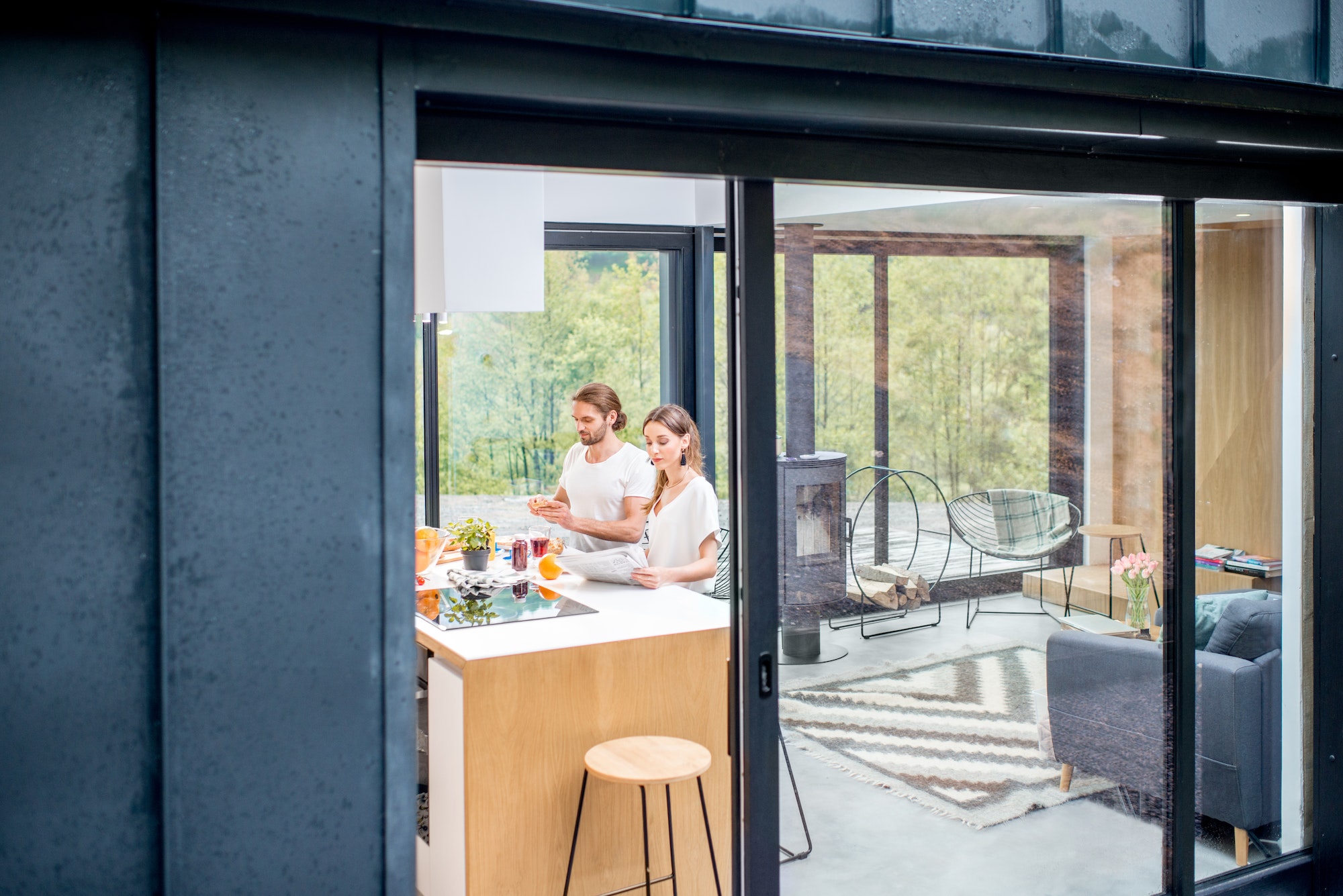How much income do you need to buy a $650,000 house? This question is on the minds of many potential homeowners as they dream of purchasing their perfect home. Figuring out the answer can seem overwhelming, but it doesn’t have to be. With a few simple steps, you can break down the process and be well on your way to owning that dream house.
In this article, we’ll explore the essential factors you need to consider when determining how much income is necessary to buy a $650,000 house. By understanding these aspects, you can make a realistic plan to achieve your goal of homeownership.
So, let me share with you my personal journey and the 7 crucial tips I’ve learned along the way. These tips will help you determine the income you need to buy your dream home and make the process much more manageable.
Table of Contents
1. How Much Income Do You Need to Buy a $650,000 House? Key Factors
To determine how much income you need to buy a $650,000 house, you must consider several key factors that impact your ability to afford the home and qualify for a mortgage. Here’s a closer look at some of these factors:
- Down payment: A down payment is the upfront amount you pay towards the purchase of a home. Most lenders recommend a 20% down payment, which would be $130,000 for a $650,000 house. Saving for a larger down payment can reduce your monthly mortgage payments and improve your chances of mortgage approval.
- Mortgage interest rates: Interest rates directly affect your monthly mortgage payments. Lower interest rates mean lower monthly payments, which can make a home more affordable. Your credit score and current market conditions can influence the interest rates available to you.
- Debt-to-income ratio (DTI): Your DTI is the percentage of your gross monthly income used to pay monthly debt obligations. Lenders use this ratio to assess your ability to manage mortgage payments. Most lenders prefer a DTI below 43%, and maintaining a low DTI can improve your chances of mortgage approval.
- Property taxes: Property taxes vary based on the local tax rate and the home’s assessed value. These taxes are typically included in your monthly mortgage payment, so it’s essential to factor them into your overall housing budget.
- Homeowners insurance: Homeowners insurance protects your home and personal belongings from damage and theft. Lenders usually require you to have homeowners insurance, and the cost is often included in your monthly mortgage payment.
- Closing costs: Closing costs are fees and expenses paid at the end of the home-buying process, such as loan origination fees, appraisal fees, and title insurance. Closing costs typically range from 2% to 5% of the home’s purchase price, so it’s important to budget for these expenses in addition to your down payment.
Taking all these factors into account will help you determine the income needed to comfortably afford a $650,000 house while meeting the mortgage lender’s requirements.
2. The Importance of a Strong Credit Score
A strong credit score is crucial when planning to buy a $650,000 house because it significantly impacts your ability to secure a mortgage and obtain favorable loan terms. Here’s why having a high credit score is essential:
- Higher chances of loan approval: Mortgage lenders use your credit score to assess your creditworthiness and ability to repay the loan. A higher credit score indicates that you have a strong history of repaying debts on time, which makes you a more attractive borrower to lenders. As a result, a strong credit score increases your chances of getting approved for a mortgage.
- Better interest rates: Your credit score directly affects the interest rate you’re offered on a mortgage. A higher credit score typically qualifies you for lower interest rates, which can save you thousands of dollars over the life of your loan. Lower interest rates also mean lower monthly mortgage payments, making the $650,000 house more affordable.
- Lower monthly payments: As mentioned above, a higher credit score can result in lower interest rates, which in turn lead to lower monthly mortgage payments. This not only makes the home more affordable but can also help you qualify for a larger loan amount if needed.
To improve your credit score, focus on paying your bills on time, reducing your overall debt, maintaining a low credit utilization rate, and avoiding opening too many new credit accounts in a short period. Regularly checking your credit report for errors and addressing any inaccuracies can also help boost your credit score. By prioritizing your credit health, you’ll be in a better position to buy a $650,000 house and secure favorable mortgage terms.
3. Understanding Loan Types
When you’re planning to buy a $650,000 house, it’s essential to understand the different loan types available to find the best mortgage option for your financial situation. Here are some common loan types to consider:
- Conventional loans: Conventional loans are mortgages not insured by the federal government. They are offered by private lenders such as banks, credit unions, and mortgage companies. Conventional loans typically require a higher credit score and larger down payment (usually at least 5%, but ideally 20% to avoid private mortgage insurance) compared to government-backed loans. These loans can be either fixed-rate or adjustable-rate.
- FHA loans: Federal Housing Administration (FHA) loans are government-insured mortgages designed to help borrowers with lower credit scores and limited down payment savings. FHA loans usually require a minimum credit score of 580 and a down payment of at least 3.5%. These loans often have more lenient credit requirements and lower closing costs than conventional loans, making them an attractive option for first-time homebuyers or those with less-than-perfect credit.
- VA loans: The U.S. Department of Veterans Affairs (VA) offers VA loans to eligible active-duty service members, veterans, and surviving spouses. VA loans do not require a down payment or private mortgage insurance (PMI), and they often have lower interest rates and more lenient credit requirements compared to conventional loans. To qualify for a VA loan, borrowers must meet specific service requirements and obtain a Certificate of Eligibility (COE).
- USDA loans: The United States Department of Agriculture (USDA) offers mortgage loans to help low- to moderate-income borrowers purchase homes in eligible rural and suburban areas. USDA loans do not require a down payment, and they have more relaxed credit requirements compared to conventional loans. However, borrowers must meet income and property eligibility requirements to qualify for a USDA loan.
Each loan type has its advantages and disadvantages, so it’s essential to research and compare your options before deciding on the best fit for your needs. Working with a knowledgeable mortgage lender can also help you navigate the loan process and determine the most suitable mortgage type for your financial situation and the purchase of a $650,000 house.
4. How to Budget for Your Dream Home

Budgeting for a $650,000 house is a crucial step in the home-buying process, as it helps you determine whether you can comfortably afford the home and meet the mortgage lender’s requirements. Here’s how to create a budget for your dream home:
- Calculate your monthly expenses: Start by listing all your current monthly expenses, including rent or mortgage payments, utilities, groceries, transportation, insurance, and any outstanding debts such as student loans or credit card payments. This will give you a clear picture of your current financial obligations and help you understand how much room you have in your budget for a new mortgage payment.
- Determine your maximum budget: To figure out the maximum amount you can afford to spend on a house, many financial experts recommend following the 28/36 rule. This rule states that your monthly housing costs (including mortgage principal, interest, property taxes, and insurance) should not exceed 28% of your gross monthly income, while your total debt payments (including housing costs) should not exceed 36% of your income. Based on these percentages, calculate the maximum mortgage payment you can afford and use a mortgage calculator to estimate the corresponding home price.
- Plan for future financial changes: When budgeting for your dream home, consider any future financial changes that could impact your ability to afford the house, such as a potential job loss, salary increase, or the addition of children to your family. Planning for these changes can help you make a more informed decision about how much to spend on a home and ensure that you can comfortably afford the mortgage payments over the long term.
You can create a realistic budget for your dream home and make sure you’re financially prepared to buy a $650,000 house. Keep in mind that working with a financial planner or mortgage lender can provide additional guidance and help you fine-tune your budget to meet your specific needs and goals.
5. Tips for Saving for Your Down Payment
Saving for a down payment on a $650,000 house can be a significant financial challenge, but with careful planning and discipline, you can reach your goal. Here are some tips to help you save for your down payment:
- Set a specific savings goal: Determine the amount you need to save for a down payment, considering factors such as the type of loan you plan to use and your desired down payment percentage. Having a clear goal in mind makes it easier to stay focused and motivated throughout the saving process.
- Automate your savings: Set up automatic transfers from your checking account to dedicated savings account each month. This approach ensures that you consistently save for your down payment and reduces the temptation to spend the money on other expenses. You can also consider depositing a portion of any windfalls, such as tax refunds or bonuses, directly into your down payment savings account.
- Cut unnecessary expenses: Review your current spending habits and identify areas where you can cut back. This may include dining out less frequently, canceling unused subscriptions, or reducing discretionary spending on entertainment and shopping. Redirect the money you save from these expenses into your down payment savings account to accelerate your progress.
- Increase your income: Look for opportunities to earn extra money to put towards your down payment. This could include taking on a part-time job, freelancing, or selling items you no longer need. The additional income can help you reach your down payment goal more quickly.
- Invest wisely: If you have a longer timeline for saving your down payment, consider investing your savings in low-risk investment options, such as a high-yield savings account, a certificate of deposit (CD), or a conservative mutual fund. This strategy can help your money grow faster through interest and compound earnings, bringing you closer to your down payment goal.
6. Working with a Mortgage Lender
When purchasing a home worth $650,000, working with a mortgage lender is crucial to secure a mortgage loan and navigating the home-buying process. Here are some key aspects to consider when working with a mortgage lender:
- Pre-approval process: Before starting the home search, it is important to get pre-approved for a mortgage. The pre-approval process involves submitting your financial information to a mortgage lender who will then determine how much they are willing to lend you based on your credit score, income, and debt-to-income ratio. This step is essential as it helps you understand how much you can afford to spend on a home and makes your offer more attractive to sellers.
- Comparing lenders: It is crucial to research and compare various mortgage lenders to find the one that best suits your needs. Some factors to consider include interest rates, fees, closing costs, loan terms, and customer reviews. You can ask for recommendations from friends or family members who have recently purchased a home or use online resources to compare lenders.
- Understanding loan terms: Understanding the terms of your mortgage loan is critical to making informed decisions. This includes the interest rate, loan term, monthly payment, and any additional fees or charges. A mortgage lender can help you understand the terms of your loan and any associated costs, such as private mortgage insurance or property taxes.
Working with a mortgage lender can help you navigate the home-buying process and secure a mortgage loan for your $650,000 dream home. Make sure to get pre-approved before starting your home search, compare lenders to find the best fit for your needs, and understand the loan terms to make informed decisions. With the right mortgage lender by your side, you can make the home-buying process a smoother and less stressful experience.
7. Partnering with a Real Estate Agent
Partnering with a real estate agent when buying a $650,000 home can be highly beneficial, as they bring expertise and experience to the home-buying process. Here are some reasons why working with a real estate agent can be valuable:
- Expertise in the local market: Real estate agents have in-depth knowledge of the local housing market, including trends, prices, and neighborhoods. They can help you understand which areas are best suited to your needs and budget, and provide insights into the local community.
- Assistance in negotiations: Real estate agents can help you negotiate the best deal on your dream home. They have experience in handling negotiations and can use their knowledge of the market to help you secure the best price and terms.
- Guidance through the home-buying process: The home-buying process can be complex and overwhelming, but a real estate agent can guide you through every step. They can help you understand the buying process, provide advice on financing options, and assist with paperwork and legal documents.
When selecting a real estate agent, look for one with a good reputation, local knowledge, and experience working with clients in your price range. With the right real estate agent, you can make your home-buying journey a smooth and successful one.
FAQs
Q: Can I still buy a $650,000 house if I have a low credit score?
A: While it may be more challenging, it’s still possible to buy a house with a low credit score. Consider working with a mortgage lender that specializes in assisting borrowers with lower credit scores, and focus on improving your credit over time.
Q: How can I determine my debt-to-income ratio?
A: To calculate your debt-to-income ratio, add up all your monthly debt payments and divide the total by your gross monthly income. This ratio is a critical factor that lenders consider when determining your eligibility for a mortgage.
Q: Are there any government programs that can help me buy a $650,000 house?
A: Yes, there are government programs, such as FHA, VA, and USDA loans, that can assist eligible homebuyers in purchasing a house. These programs often have more lenient credit requirements and may offer lower down payment options.
Q: How much should I save for a down payment on a $650,000 house?
A: It’s generally recommended to save at least 20% of the home’s value for a down payment, which would be $130,000 for a $650,000 house. However, some loan programs allow for lower down payments, so it’s essential to research and choose the best option for your financial situation.
Q: How can I improve my chances of getting approved for a mortgage?
A: There are several ways to improve your chances of mortgage approval, including maintaining a healthy credit score, reducing your debt-to-income ratio, saving for a substantial down payment, and demonstrating a stable employment history.
Q: Is it better to have a fixed-rate or adjustable-rate mortgage for a $650,000 house?
A: The choice between a fixed-rate and adjustable-rate mortgage depends on your personal preferences and financial situation. Fixed-rate mortgages offer stability with consistent monthly payments, while adjustable-rate mortgages may provide lower initial interest rates that can fluctuate over time. Consider the pros and cons of each before making a decision.
Q: How long does the home-buying process typically take?
A: The home-buying process can vary depending on factors such as market conditions, loan approval, and individual circumstances. Generally, it can take anywhere from 30 to 60 days from the time an offer is accepted to closing on a home. However, this timeline can be longer or shorter based on specific situations.
Q: Can I buy a $650,000 house with a co-borrower?
A: Yes, you can buy a house with a co-borrower, such as a spouse or family member. Combining incomes with a co-borrower may make it easier to qualify for a mortgage and afford a higher-priced home. However, both borrowers will be responsible for the mortgage payments, and both credit scores will be considered in the loan approval process.
Discover more from Futurist Architecture
Subscribe to get the latest posts sent to your email.



